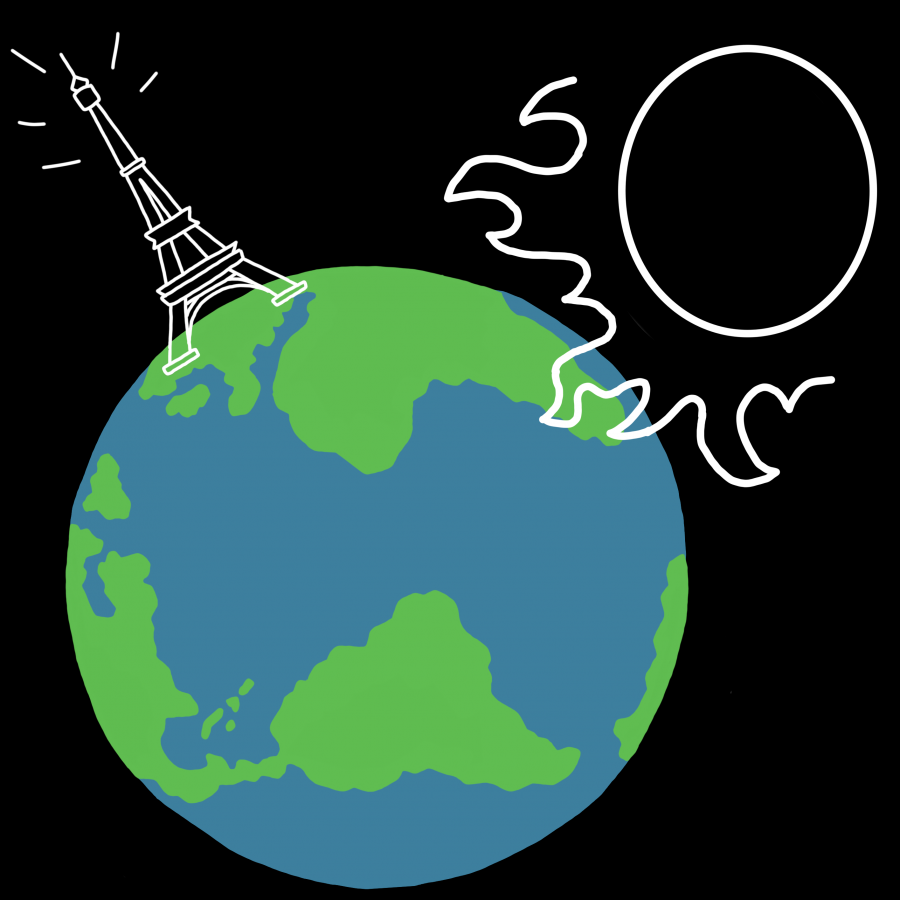Climate Change
In December 2015 the Climate Change Conference in France met. During this
conference, the new Paris Agreement was negotiated. This agreement is a global effort to
reduce greenhouse gas emissions and worldwide climate changes. Global warming has had big
impacts around the nations and is on the rise still. Changes such as the oceans rising as well as
global temperature both in the atmosphere and oceans were discussed.
Scientists have been warning that we are close to crossing the line of seeing irreversible
effects. To put it in perspective, the globe is headed to a five degree Celsius rise (or 41 degrees
Fahrenheit). This may not seem to some like a very big number but it is around the same
temperature difference between our last ice age and today’s climate.
In order for the Paris Agreement to become permanent and binding, 55 countries would
have to sign and support it, which would roughly represent at least 55 percent of greenhouse
gas emissions around the world. This could actually represent a lot more than 55 percent of the
gasses if there is support from larger countries and maybe signatures from more than just that
many countries representatives.
Many argue that climate change is naturally occurring and that we shouldn’t worry about
it as much as we are at the moment. However, 97 percent of climate experts have agreed that it
is the human population and fossil-fuel burning that is causing climate change.
“Though Americans make up just four percent of the world’s population we produce 25
percent of the world’s carbon dioxide pollution from fossil-fuel burning — by far the largest share
of any country.” said the Natural Resources Defense Council.
However the agreement doesn’t only cover global warming. The Minister of Foreign
Affairs and International Development Laurent Fabius said, “Of course, firstly and above all it
concerns the climate (housing, transport, industry agriculture etc.), but it also concerns
biodiversity, water and food resources, forests, migration movements and, finally, the issue of
war and peace.”
France was also talking about the carbon dioxide levels that are on the rise today as
well. “There is more carbon dioxide in the atmosphere today than at any point in the last
800,000 years,” said Robert Kunzig from the National Geographic Society.
The greenhouse gasses are also causing global issues within our oceans. Since the
1990s, the oceans have been rising at 0.14 inches per year. “Global warming puts coral reefs in
danger as the ocean warms, scientists fear that coral reefs will not be able to adapt quickly
enough to the resulting changing conditions, and bleaching incidents and diseases will
increase,” The Coral Reef Alliance.
As global warming and climate change continues, we are injuring many of our natural
resources. Glaciers are melting, CO2 levels are rising, oceans are warming and fossil fuels are
still burning. Many are hopeful for support of the Paris Agreement and the 2016 meeting of the
Climate Change Conference in Morocco.

Emily Rodrigues is a spunky little spark who is now into her senior year and her second year of being...




![Photo Credit; Miller, Kim. “City of Asheville prepares for a weekend of winter weather.” City of Asheville prepares for a weekend of winter weather [Ashville], 10 February 2023, https://www.ashevillenc.gov/news/city-of-asheville-prepares-for-a-weekend-of-winter-weather/. Accessed 06 January 2025.](https://binghamprospector.org/wp-content/uploads/2025/01/Screenshot-2025-01-14-7.54.38-AM.png)